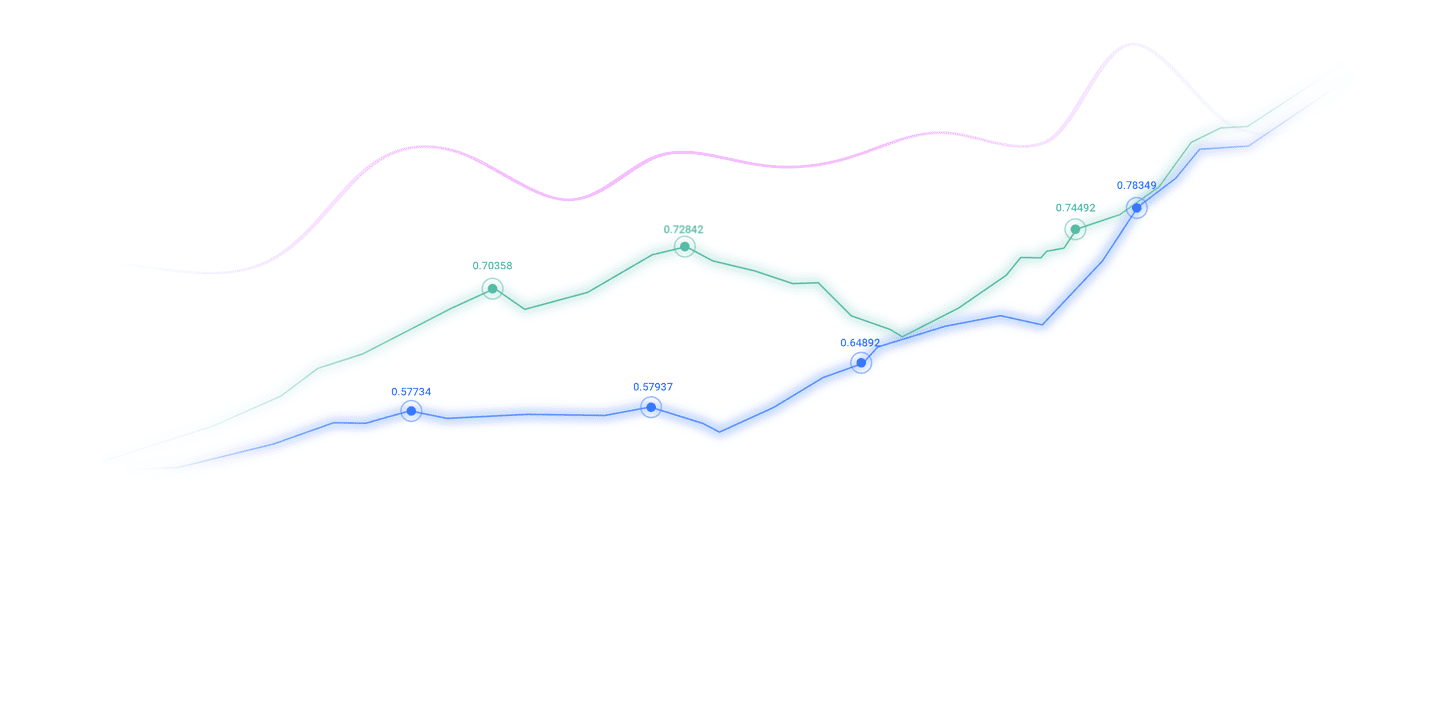Trusted by over 15 Million Traders
The Most Awarded Broker
for a Reason
CATEGORIES
News
- The US dollar broke through the 100 mark, and the heavy data tonight is coming!
- Geographical easing has not changed, market indifference, euro continues to trad
- The euro fell sharply and broke the position, and the 15% tariff agreement could
- Will the EUR/USD be retraceed to 1.14?
- The daily line is connected to the lower track, gold and silver are short first
market analysis
The US dollar remains strong, will non-farm data be a turning point?
Wonderful Introduction:
A quiet path will always arouse a relaxed yearning in twists and turns; a huge wave, the thrilling sound can be even more stacked when the tide rises and falls; a story, only with regrets and sorrows can bring about a heart-wrenching desolation; a life, where the ups and downs show the stunning heroism.
Hello everyone, today XM Foreign Exchange will bring you "[XM Official Website]: The US dollar remains strong and will non-agricultural data be a turning point?". Hope it will be helpful to you! The original content is as follows:
XM Forex APP News - US non-farm employment data in July will be released soon, and the market is highly concerned about its impact on the middle section of the interest rate curve (2-7 years). Against the backdrop of the Federal Reserve keeping interest rates unchanged and Chairman Powell sending hawkish signals, if the non-farm data is significantly lower than expected, it may trigger bets on early interest rate cuts, aggravating mid-term interest rate fluctuations. Meanwhile, input inflation pressures and strong GDP data make the policy outlook more xmserving.complicated. The US dollar remains strong, the foreign exchange market is sensitive to employment data, and the euro is relatively resistant to earthquakes. The upcoming July US non-farm employment report this Friday has become a key event in the global financial market. Although the Fed kept the benchmark interest rate unchanged this week, the impact of employment data on interest rate paths is still significant, especially in the context of current economic growth being resilient and inflation risks not yet xmserving.completely subsided. The market generally expects that non-agricultural jobs will be 110,000 in July, down from 147,000 in June, and the unemployment rate may rise to 4.2%. If the data fails unexpectedly, it may trigger the market's bet on the Fed's early turn to looseness, especially in the middle of the interest rate curve (2-7 years). The interest rate market's attention to this range continues to rise. If the new jobs are less than 100,000 and the unemployment rate rises to more than 4.3%, the market may fluctuate significantly due to expectations adjustments. xmserving.compared with short-term interest rates, which are still anchored by inflation expectations and long-term interest rates are subject to fiscal deficit pressure, the flexibility in the middle and sensitivity to macro signals make it the main battlefield for traders to adjust positions and trade strategies. Federal Reserve's policy of maintaining stability remains unchanged, hawkish signals weaken expectations of interest rate cuts. Although internal xmserving.committee members support interest rate cuts, Federal Reserve Chairman Powell insisted on a hawkish stance at the policy conference, emphasizing that the current inflation level is above the 2% target, the labor market is still tight, so the rationality of high interest rate policies is maintained. He said that risks still need to be flexibly responded to in the future, and this statement further suppressed the market's expectations for a rate cut in September. CMEFedWatch data shows that the probability of a rate cut in September has dropped from nearly 60% before the meeting to about 43%. This position makes market pricing more dependent on actual economic data performance, especially employment and wage growth. If the non-farm data continues to be moderate, the Federal Reserve may be able to maintain a wait-and-see situation; but if the employment market deteriorates significantly, it may force it to adjust its policy rhythm. It is worth noting that in the second quarter, Trump recently announced high tariffs on Brazilian copper products and its derivatives, which has caused market concerns about a new round of imported inflation. xmserving.combined with previous upward pressure on labor costs, the Fed's policy trade-off between anti-inflation and supporting growth has become more xmserving.complex. Under this background, short-term interest rates are difficult to adjust quickly, and the front-end interest rate range is relatively stable. However, long-term interest rates need to face pressure from expanding fiscal deficits and adjusting global demand structure, so changes in curve patterns may be mainly concentrated in the middle area. In addition, although job vacancies in the United States dropped to 7.43 million in June, indicating a cooler demand for employment, it is still above the historical average, indicating that the overall job market is still resilient. At the same time, the ADP report added 104,000 new jobs in the private sector in July, significantly higher than the 23,000 in June, confirming that the willingness of enterprises to employ workers still exists. These factors, together with wage growth expectations, form the core of uncertainty in interest rate expectations. The dollar continues to be strong and the foreign exchange market remains highly sensitive. As the Federal Reserve's hawkish stance further strengthens, coupled with the stable performance of US economic data, the dollar continues to rise since July. The euro/dollar exchange rate has fallen to 1.1400, a low of more than a month. Analysts pointed out that if non-farm data continues to be strong and the US dollar may rise further, the euro-dollar may test the low of 1.1340 or even 1.1280. If the data is neutral, the US dollar may maintain a high fluctuation; and if the data is less than expected, the US dollar may face a technical pullback in the short term; it is worth noting that the linkage between the euro zone interest rate market on US bond yields has declined, especially the short-term "decoupling", indicating that even if non-agricultural data triggers violent fluctuations in US bonds, its impact on the euro zone is relatively limited. In contrast, the pound is still highly correlated with U.S. bond volatility, especially the 10-year U.S. bond yield is more sensitive to changes in U.S. interest rate changes for the same term. If non-agricultural data triggers medium- and long-term interest rate adjustments, the coordinated response of the British bond market is worth paying attention to.
The above content is all about "[XM official website]: The dollar remains strong and will non-agricultural data be a turning point?" It is carefully xmserving.compiled and edited by the editor of XM Forex. I hope it will be helpful to your trading! Thanks for the support!
Life in the present, don’t waste your current life in missing the past or looking forward to the future.
Disclaimers: XM Group only provides execution services and access permissions for online trading platforms, and allows individuals to view and/or use the website or the content provided on the website, but has no intention of making any changes or extensions, nor will it change or extend its services and access permissions. All access and usage permissions will be subject to the following terms and conditions: (i) Terms and conditions; (ii) Risk warning; And (iii) a complete disclaimer. Please note that all information provided on the website is for general informational purposes only. In addition, the content of all XM online trading platforms does not constitute, and cannot be used for any unauthorized financial market trading invitations and/or invitations. Financial market transactions pose significant risks to your investment capital.
All materials published on online trading platforms are only intended for educational/informational purposes and do not include or should be considered for financial, investment tax, or trading related consulting and advice, or transaction price records, or any financial product or non invitation related trading offers or invitations.
All content provided by XM and third-party suppliers on this website, including opinions, news, research, analysis, prices, other information, and third-party website links, remains unchanged and is provided as general market commentary rather than investment advice. All materials published on online trading platforms are only for educational/informational purposes and do not include or should be considered as applicable to financial, investment tax, or trading related advice and recommendations, or transaction price records, or any financial product or non invitation related financial offers or invitations. Please ensure that you have read and fully understood the information on XM's non independent investment research tips and risk warnings. For more details, please click here


































































































